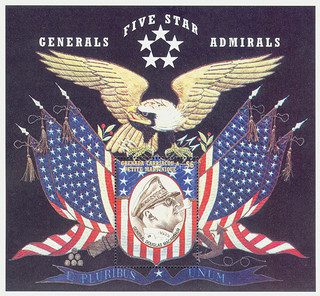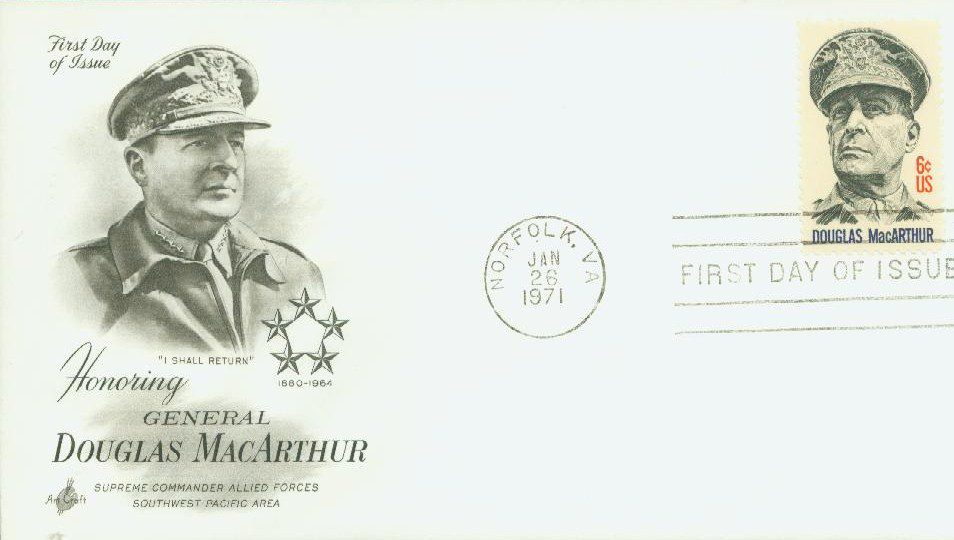
On October 20, 1944, General Douglas MacArthur fulfilled his promise to return to the Philippines.
In 1935, MacArthur was made military advisor to the Philippines, tasked with helping them create an independent army. (The Philippines had been an American colony since the Spanish-American War at the turn of the century). MacArthur established a home there with his family and retired two years later.
In July 1941, as tensions were rising around the globe as World War II escalated, President Roosevelt federalized the Philippine army and recalled MacArthur to active duty as commander of U.S. Army Forces in the Far East.
Then the unthinkable happened. The Japanese attacked Pearl Harbor on December 7, forcing America into the war. Ten hours later, the Japanese invaded the Philippines. MacArthur and his men first retreated to the Bataan Peninsula. As the attacks continued, he moved his headquarters to Corregidor, but that too became a target of air raids and other attacks. By February 1942, the situation was bleak and President Roosevelt ordered MacArthur to leave for Australia. Forced to leave his men behind, MacArthur did as he was ordered, but promised, “I shall return.”
While MacArthur took over the defense of Australia, 70,000 of his American and Philippine soldiers were captured on Bataan in April and embarked on a death march that took the lives of thousands of men. Corregidor surrendered the following month, adding another 15,000 Allied prisoners. The Philippines were firmly in Japanese control and the Allies had no clear plan for their liberation.

But MacArthur wouldn’t forget his promise. He repeated it frequently in interviews and resolved to follow through. Over the next two years, he won a string of victories in the New Guinea campaign and was ready to invade the Philippines by September 1944. However, Admiral Chester Nimitz, commander of the Pacific Fleet, had planned to strike Japan through a more direct route that wouldn’t involve the Philippines. MacArthur made his case and the Joint Chiefs agreed to invade the Philippines.
The Allies assembled the largest landing force ever used in a Pacific campaign – more than 300 ships approached the Philippines that fall. Then, on October 20, 1944, MacArthur’s troops stormed the beach at the Philippine island of Leyte. MacArthur waded ashore hours later and declared via radio broadcast: “People of the Philippines, I have returned!”

The ensuing Battle for Leyte Gulf was one of the greatest naval battles in history. It marked the first appearance of Japanese kamikazes – suicide pilots who would crash planes filled with explosives into Allied warships. In spite of this, the Japanese retreated and wouldn’t launch another major offensive for the rest of the war.
MacArthur continued his drive through the Philippines, liberating his imprisoned troops in January 1945. Though he re-took the capital of the Philippines in March and considered the offensive over in June, sporadic fighting continued until the end of the war in August.
Click here to see what else happened on This Day in History.



He said “I shall return”. Well he did. Then in the Korean War, Truman told him he had to go home, and he did. The he gave that eloquent speech before Congress. “Old soldiers never die, they just fade away” When I make trips to Washington Missouri, where they make corncob pipes, I always think of MacArthur.
A true megalomaniac and egotist. My dad served under him and was highly decorated for his actions, but he despised MacArthur as a commander. he deserved his recall.
Yes, as is appropriate in a civilian controlled military. However, we will never know what the world might be like today had we continue and challenged China when we had the strength to do so.
October 20th, 2022.
Greetings and God’s blessings.
Historian John Prados said that on October 20th 1944 the “I shall return” day of General MacArthur to the Philippines, MacArthur sent a letter to President Roosevelt for FDR’s philatelic collection. Today October 20th , 2022 the FDR Museum in Poughkeepsie New York told me that FDR’s stamp collection was sold. Where is MacArthur’s October 20th , 1944 stamp sent to FDR for FDR’s philatelic collection?
Yours in the Lord ,
Brother Matt